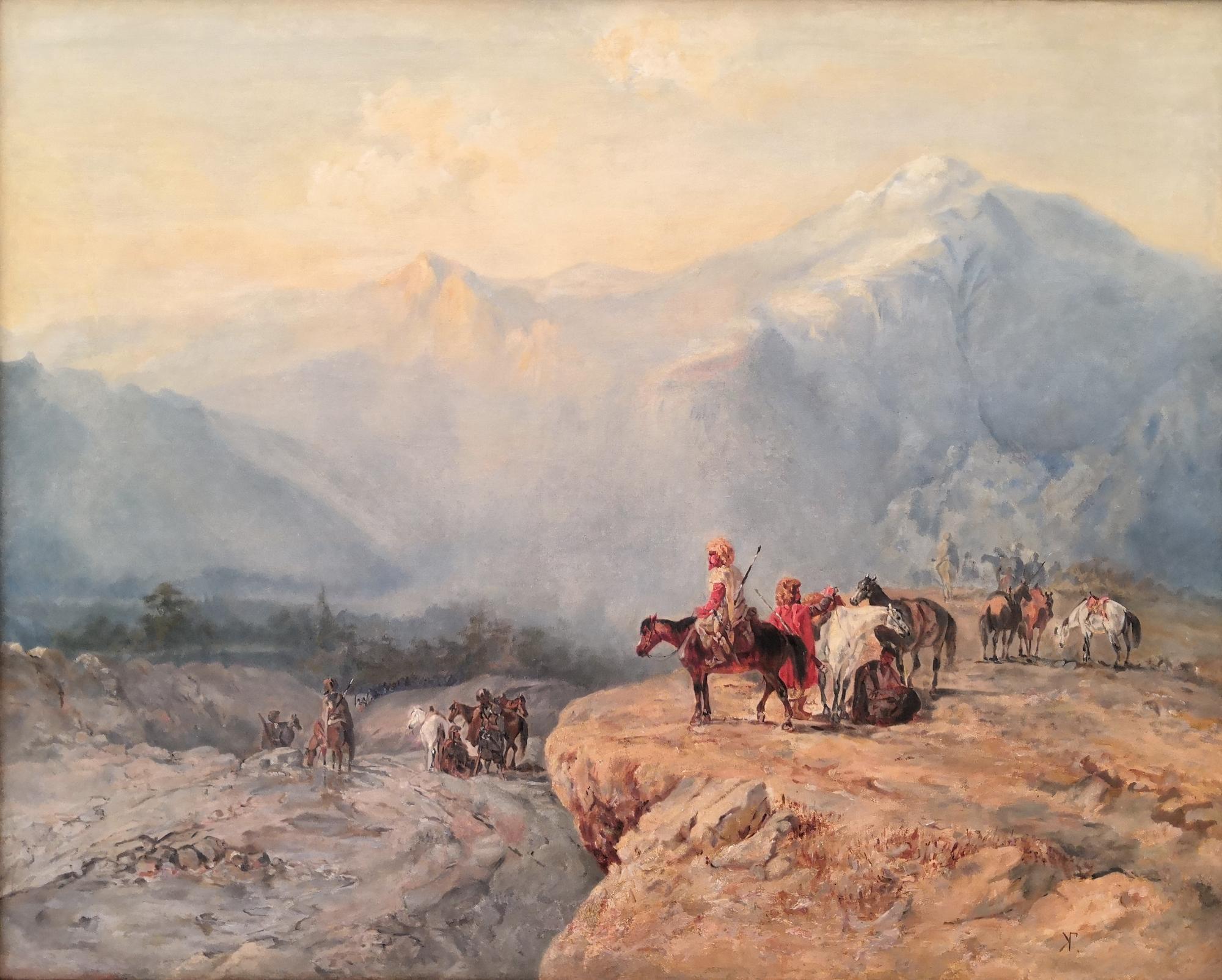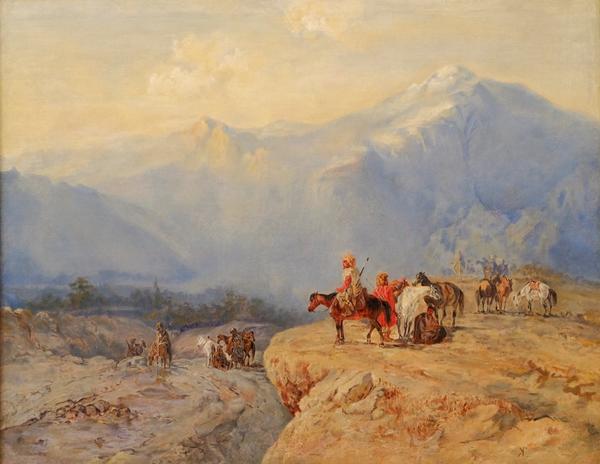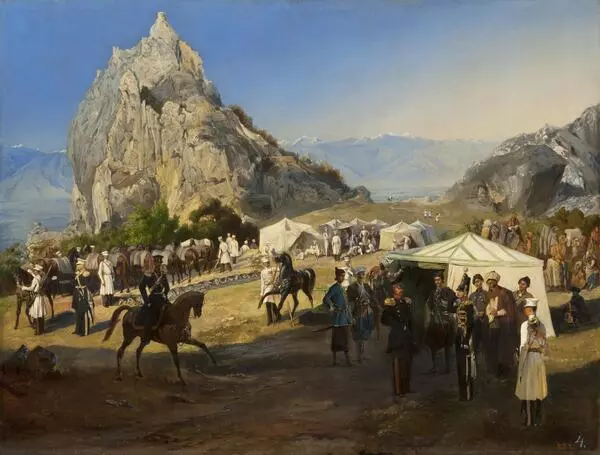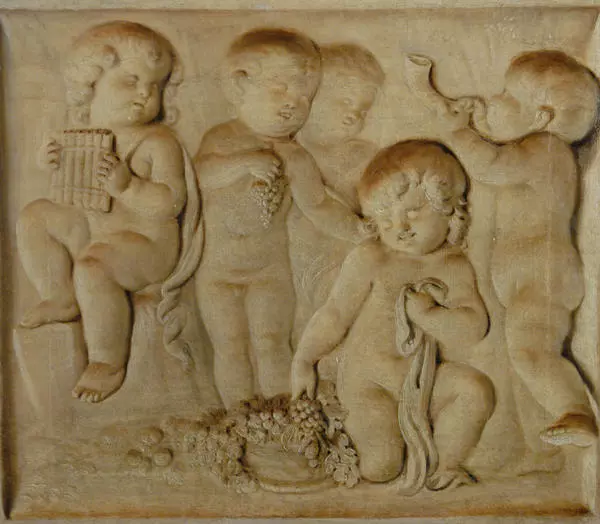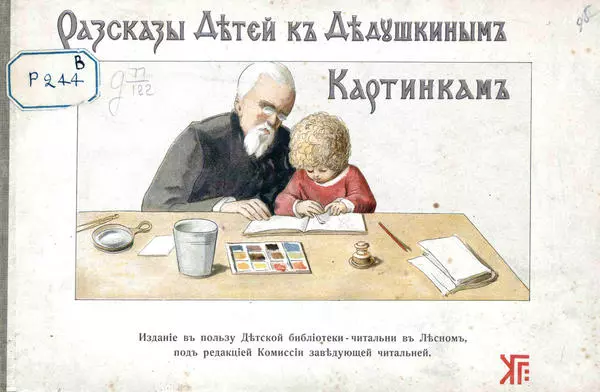Grigory Gagarin painted the View from the Table Mountain in the middle of the 19th century. He worked in the oil-on-canvas technique. The mountain, known as Table Mountain, is located in the North Caucasus, mostly in the Jeirakh district of Ingushetia. Mountains of this type are referred to as ‘table mountains’ due to their flat truncated tops.
In the foreground, the artist depicted three Caucasian horsemen. They stopped to rest at the edge of the Table Mountain. In the background one can see other mountain dwellers crossing a shallow river. The composition is painted in light colours. The artist often used that colour scheme in his works. The View from the Table Mountain portrays quite an ordinary war environment in the Caucasus of Lermontov’s time.
Grigory Gagarin was called the discoverer of the Caucasus in Russian art. In the 1840s he entered on his military service and, except for brief intervals, lived and worked in the Caucasus until the 1850s. The artist studied everyday life and art of local residents with great interest. He always had a sketch book ready at hand.
More often than other motifs, Gagarin depicted scenes of military and camp life: soldiers by a wattle fence, mountaineers around a campfire, Circassian saklias. Saklia is a type of dwelling hut of Caucasian mountaineers. Art historian Anna Kornilova noted that during that period the artist had “a graceful opportunity to combine romantic elation and true facts of life in realistic compositions”. She also mentioned that he questioned witnesses about long-distance military expeditions, which the artist was not a party to. Listening to the stories, he drew sketches and marked the name of the person who had given him “graphic information” right at the bottom of the drawing.
In the Caucasus, the artist kept up his acquaintance with writer Mikhail Lermontov, who had been sent to exile to that region. The poet and the artist lived in the same tent, took part in the same missions and painted together two watercolors: The Episode from the Battle of Valerik and The Fight. An Episode from the Caucasian War. These watercolors bear the inscriptions: “Lermontov”s painting. Gagarin”s colourization”.
Grigory Gagarin’s works are largely valued as documentaries. However, his works are far from being detached records of events; they convey liveliness and spontaneity. In the late 1850s, albums with lithographs based on his works were published in Paris: Scenic Caucasus, Prince G.G. Gagarin. Most of his legacy remains unpublished, though. The collection of the State Russian Museum alone holds over six thousand watercolors, drawings, paintings and graphic works of the artist.
In the foreground, the artist depicted three Caucasian horsemen. They stopped to rest at the edge of the Table Mountain. In the background one can see other mountain dwellers crossing a shallow river. The composition is painted in light colours. The artist often used that colour scheme in his works. The View from the Table Mountain portrays quite an ordinary war environment in the Caucasus of Lermontov’s time.
Grigory Gagarin was called the discoverer of the Caucasus in Russian art. In the 1840s he entered on his military service and, except for brief intervals, lived and worked in the Caucasus until the 1850s. The artist studied everyday life and art of local residents with great interest. He always had a sketch book ready at hand.
More often than other motifs, Gagarin depicted scenes of military and camp life: soldiers by a wattle fence, mountaineers around a campfire, Circassian saklias. Saklia is a type of dwelling hut of Caucasian mountaineers. Art historian Anna Kornilova noted that during that period the artist had “a graceful opportunity to combine romantic elation and true facts of life in realistic compositions”. She also mentioned that he questioned witnesses about long-distance military expeditions, which the artist was not a party to. Listening to the stories, he drew sketches and marked the name of the person who had given him “graphic information” right at the bottom of the drawing.
In the Caucasus, the artist kept up his acquaintance with writer Mikhail Lermontov, who had been sent to exile to that region. The poet and the artist lived in the same tent, took part in the same missions and painted together two watercolors: The Episode from the Battle of Valerik and The Fight. An Episode from the Caucasian War. These watercolors bear the inscriptions: “Lermontov”s painting. Gagarin”s colourization”.
Grigory Gagarin’s works are largely valued as documentaries. However, his works are far from being detached records of events; they convey liveliness and spontaneity. In the late 1850s, albums with lithographs based on his works were published in Paris: Scenic Caucasus, Prince G.G. Gagarin. Most of his legacy remains unpublished, though. The collection of the State Russian Museum alone holds over six thousand watercolors, drawings, paintings and graphic works of the artist.
